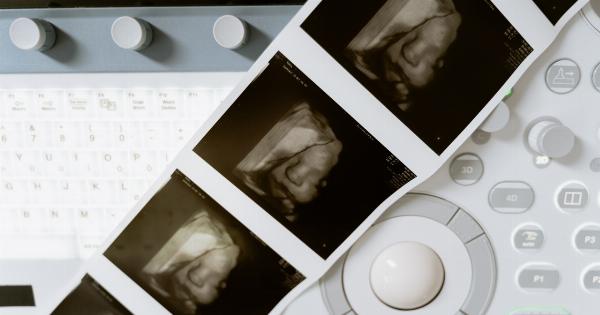Venous insufficiency is a medical condition that occurs when the veins in the legs are unable to efficiently return blood back to the heart. It is a problematic condition that can lead to a range of symptoms and complications if left untreated.
Symptoms of Venous Insufficiency
The symptoms of venous insufficiency can vary from person to person but may include:.
- Swelling in the legs, ankles, or feet
- Discoloration of the skin, such as a reddish-brown or tan hue
- Pain or aching sensation in the legs, especially after standing or sitting for long periods
- Leg cramps or a feeling of heaviness in the legs
- Varicose veins
- Itching or dryness of the skin
- Open sores or ulcers, particularly around the ankles (in severe cases)
Diagnosing Venous Insufficiency
Several examinations and tests can help diagnose venous insufficiency accurately. These tests help determine the underlying cause and severity of the condition.
Venous Doppler Ultrasound
Venous Doppler ultrasound is a non-invasive test that uses soundwaves to create images of the veins in the legs. It helps evaluate the blood flow and identify any abnormalities or blockages.
Venogram
A venogram involves injecting a contrast dye into a vein and taking X-ray images. This test provides a clear view of the veins and can help detect any obstructions or abnormalities.
CT Scan or MRI
In certain cases, a CT scan or MRI may be recommended to get a detailed view of the veins and identify any underlying conditions that may be contributing to venous insufficiency.
Physical Examination
A physical examination is often conducted to assess the visible signs of venous insufficiency, such as swelling, discoloration, and varicose veins. The doctor may also ask questions about the patient’s medical history and symptoms.
Duplex Ultrasound
Duplex ultrasound combines traditional ultrasound with Doppler technology. This test measures the speed and direction of blood flow in the veins, allowing doctors to evaluate the functionality of the venous valves.
Trendelenburg Test
The Trendelenburg test involves the patient lying flat on their back while the doctor examines the leg veins. The doctor applies pressure to the patient’s saphenous vein to evaluate the blood flow and the competency of the venous valves.
Photoplethysmography
Photoplethysmography is a non-invasive test that uses light sensors to measure the blood volume and determine if there are any abnormalities in the venous system.
Angiography
In rare cases, angiography may be required to assess the condition of the deep veins. This procedure involves injecting a contrast dye into the veins, allowing for detailed X-ray imaging of the blood vessels.
Treating Venous Insufficiency
Treatment for venous insufficiency primarily focuses on improving blood flow and relieving symptoms. The following treatment options may be recommended:.
- Lifestyle changes: These may include regular exercise, elevating the legs, avoiding prolonged sitting or standing, maintaining a healthy weight, and wearing compression stockings.
- Medications: Medications, such as diuretics and blood thinners, may be prescribed to reduce swelling and prevent blood clots.
- Sclerotherapy: This treatment involves injecting a solution into the affected veins to close them off, redirecting blood flow to healthier veins.
- Endovenous laser ablation: This procedure uses laser energy to seal off the affected veins, allowing blood to reroute through healthier veins.
- Surgical vein stripping: In severe cases, surgical removal of the damaged veins may be necessary.
Preventing Venous Insufficiency
While not all cases of venous insufficiency can be prevented, there are measures individuals can take to reduce the risk. These include:.


























